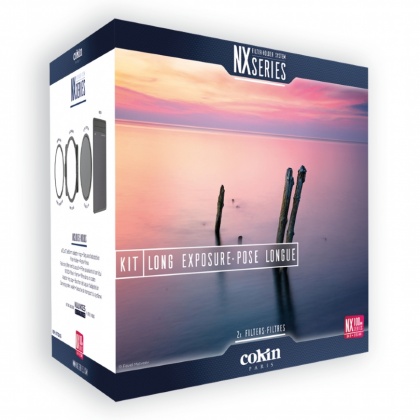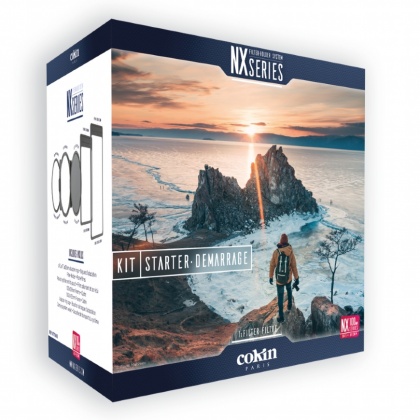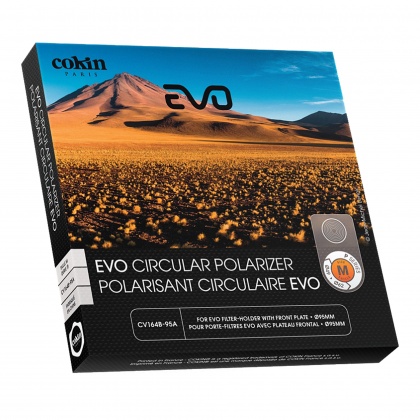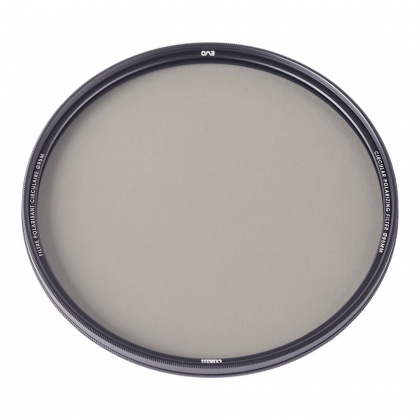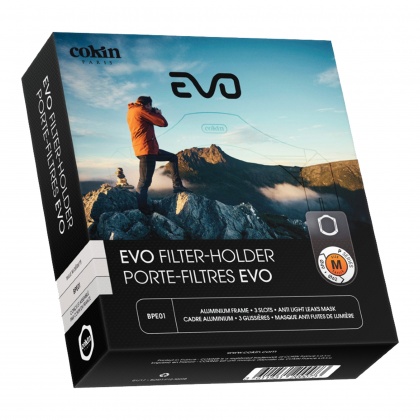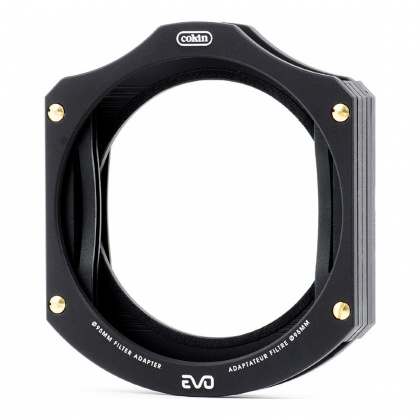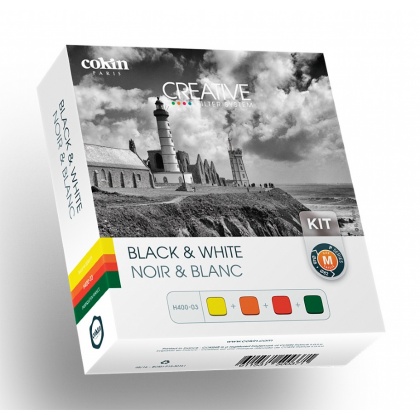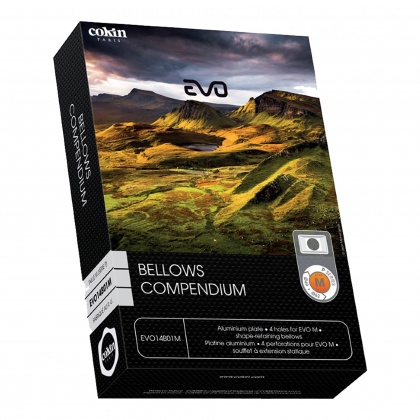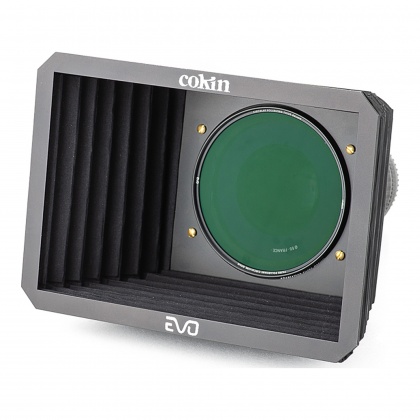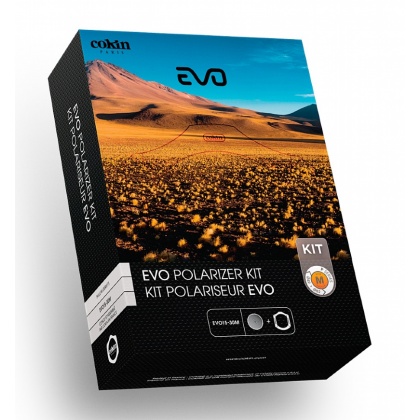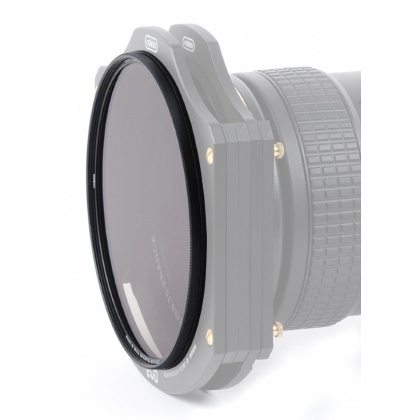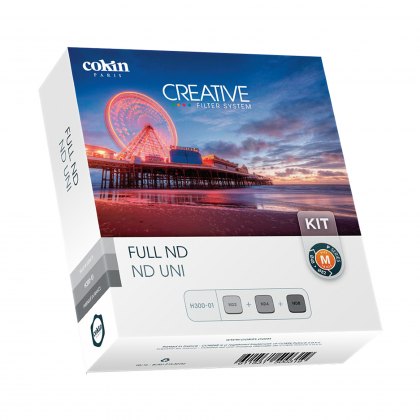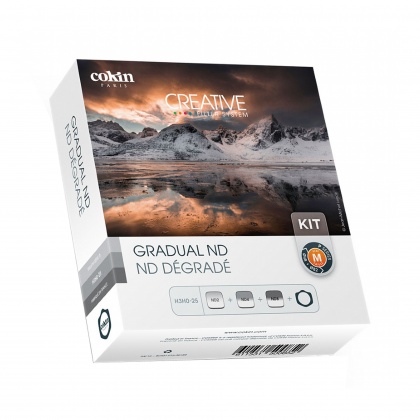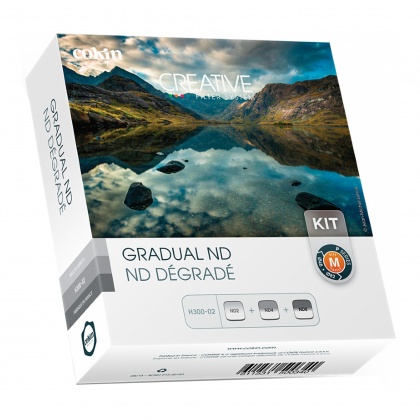Featured Products
The Cokin Creative Filter System was launched in 1978
Until then, a separate filter was required for each effect for every size of lens. The Cokin system consists of square filters which slide into a holder which then clips into an attachment ring to fit on to your lens.
As digital photography took over from film, their popularity fell off as many of the effects can be reproduced digitally. Most smartphones now have more special effects than were dreamt of in the days of film. However, Neutral Density filters remain popular with landscape photographers to cut down the light reaching the camera and so enable longer exposure times. Using a filter allows you to 'capture the moment', possibly re-take the shot while you are still on location. With everything nicely done and dusted, you can go home and read a book instead of spending all evening on Photoshop making a bad photo even worse.
Are Cokin Filters Good?
Cokin filters are made in France. Apart from that they are pretty OK. The regular filters are made from high-quality optical resin. As well as saving the expense of buying a new range of filters every time you buy (or rent) a lens with a new filter size, the Cokin system enables you to slide the filter up and down in the holder and means that you can align a graduated filter with the horizon to darken the sky.
Are Cokin Filters Made of Glass?
Most Cokin filters are made from high-grade optical resin.
The top of the range Nuances range used the best tempered mineral glass from Schott in Germany. They can be stacked together in the holder without any fear of accumulating a colour cast or other degradation.
What Size Are Cokin P Filters?
Cokin filters come in four sizes. The original A series are 65mm square. We still have a few in stock that can be used on lenses with filter sizes up to 58mm. The most popular size now is the Medium, P Series which are 85mm square and so can be used with most current lenses. The large size, Z-Pro Series are 100mm square and the XL size, X-Pro Series are 130mm
What is the Cokin P Series Filter?
The Cokin P Series Filter is the medium size in the Cokin Creative System. It is a flat, 85mm wide filter, most commonly neutral grey. It is used with a holder that allows you to attach up to three filters at a time to the front of the lens.
What is a Cokin Cromo Filter?
Cromofilter SA was the original company founded by French photographer, Jean Coquin, in 1973 to produce a filter system for creative photography. It was promply re-named as 'Cokin'.
How Do Cokin Filters Work?
The Cokin Creative System is built around a standard holder which attaches to the front of the lens with an inexpensive ring to match the filter thread on the front of the lens. Cokin filters are square and up to three at a time can be dropped into the holder. Additionally, a polarising filter can be added to the front and rotated to create the best effect. If you are using a wide-angle lens, you may need to use a slimmer holder with just two slots, eg the Cokin P Wide-Angle Filter Holder, Slim Profile to avoid vignetting.
Any number of filters can be selected and quickly dropped into place in the holder, either singly or up to three at a time.
What is a Cokin ND Filter?
A Cokin ND, or Neutral Density, is a grey filter that reduces the light without affecting the colour or anything else. It requires a higher ISO setting, a larger aperture or longer exposure time than normal and is commonly used to blur anything moving without affecting the rest of the picture. For example, you mighy use a 30 second exposure in a busy location so that only stationary objects are in place long enough to record an image. More commonly, you can turn a busy waterfall into a puffy white cloud.
The most popular are the Cokin P Full ND Filter Kit or Cokin P Graduated Neutral Density Filter Kit.
A graduated ND or ' Cokin grad' for short varies the effect across the length of the filter and is used to darken the sky above the horizon without affecting the foreground. A big advantage of the Cokin Square System over a regular screw-in filter is that the Cokin filter can be aligned with the horizon by sliding it in the holder.
How To Use Cokin Filters
Firstly, screw the adaptor ring into the front of your lens and clip the filter holder into place. Decide the effect that you are trying to achieve, select an appropriate filter and slide it into the holder. If it is graduated, slide it up and down in the holder to create exactly the effect that you are after. Take a test shot and review it to confirm that all is well and then fire away
By leaving an attachment ring on each of your lenses, the filters can be quickly moved from one lens to another without screwing anything up.
How To Attach Cokin Filter Holders
The best way is screw on the attachment ring so that it is just tight enough not to unscrew of its own accord and then carefully slip the holder over it.
How To Clean Cokin Filters
You can clean the filters in the normal way with any optical cleaner such as the Hama Micro Cleaning Cloth, Optic Cleaning kit or Zeiss lens wipes.
Which Cokin Filter System?
The Cokin Creative System has developed over the years from the original 65mm square resin filters into the latest Evolution or Evo range.
It is available in three sizes, M, L and XL.
The original plastic holders have evolved into the aptly-named EVO holders made from precision machined aluminium components screwed together with a felt light-tight seal at the rear. They are a nice match for the mineral glass Nuances range of filters and are available in all three current sizes.
Which Cokin Series?
The medium-size P series are by far the most popular. At 85mm they cover the most common lens sizes.
Some larger telephoto lenses will require either the Large size 100mm Z series or Xtra Large size X series which takes you up to 135mm wide.








 In Stock
In Stock